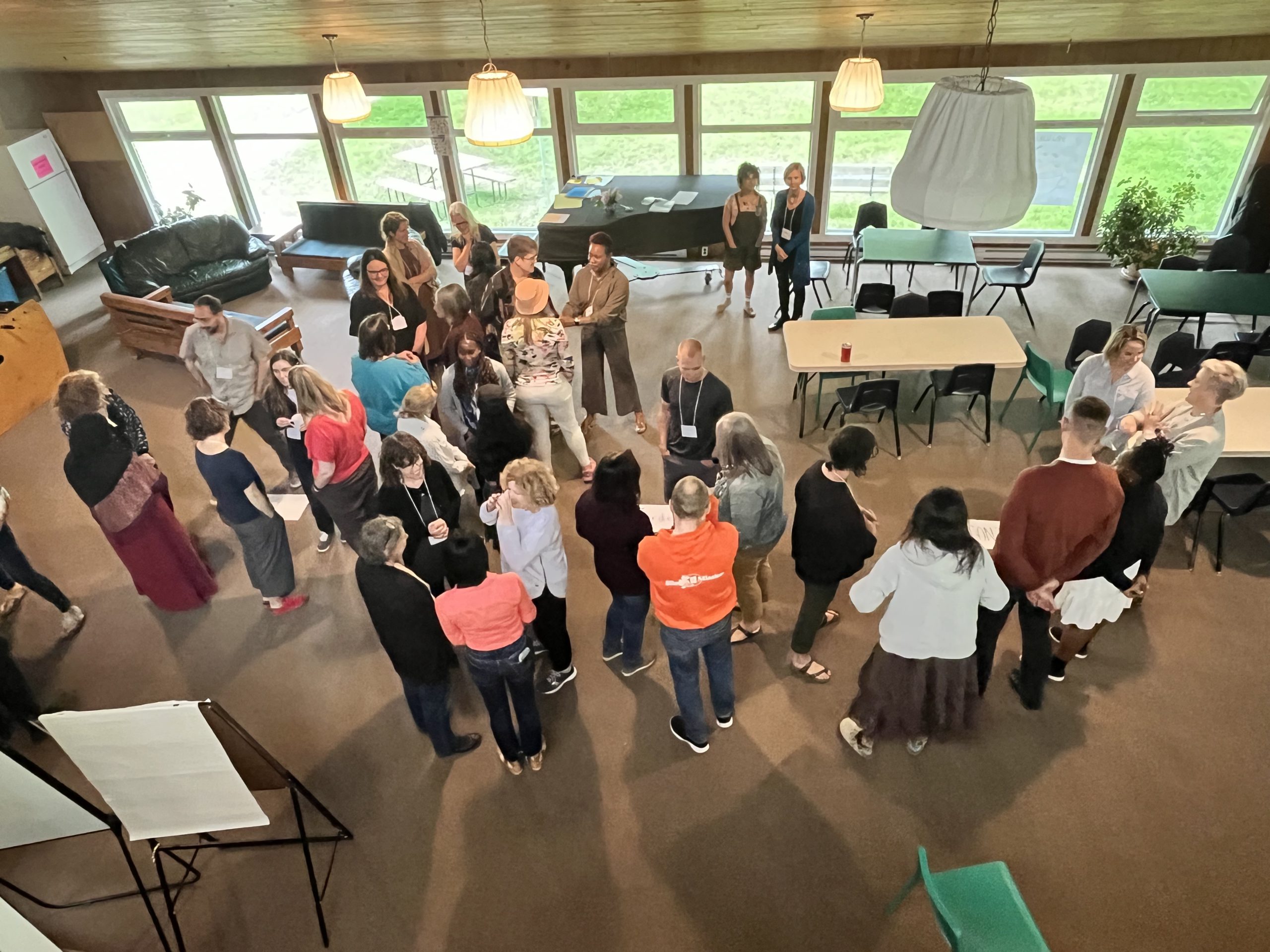Simplify update meetings
Chaordic design, Complexity, Containers, Facilitation, Leadership

When we are teaching dialogue practice and participatory meeting design, I often draw on the example of organizational and team staff meetings. Every organization I’ve worked with has these meetings and they ae almost nearly the same: an endless re-iteration of what people are doing, and rarely nothing more compelling that an email wouldn’t take care of. There is rarely even time for discussion becasue you have to get through everyone’s update in the 30 minutes assigned for the meeting.
So I often advise folks who want to bring more participatory culture to their organizations to focus on staff meetings. Rotate leadership, get serious about pruning out stuff that can be done by email and replace it with dialogue. After all, 30 minutes with an open agenda is a great place to brainstorm and discuss the thorny questions that are are dogging your team.
Today I cam across a great post from Tom Kerwin addressed to team leaders to help change their staff updates. I like this becasue it builds a container for team members to think about their work and share it in a way that makes it clear and helpful to others. (I’ve often said that if you’re having trouble explaining what you do, try to tell you great-aunt or your teenager about it.)
At any rate, here’s how Tom has re-designed his team’s update meetings:
I asked everyone to give a mini-pitch. In one minute, tell us:
- What’s the main challenge your team is tackling right now?
- What approach are you using to help your team tackle it?
- What are you looking for to tell you if your approach is working?
- And what are you looking for to tell you if your approach isn’t working?
I designed this to follow a key complexity principle: don’t try to change people, instead change their interactions. I designed this particular interaction to be a kind of ‘intuition-pump’ that could indirectly generate beneficial effects. And it did.
Here are five cool things it ended up doing:
- Everyone on my team got to practise pitching their work so that it would make sense to others and not only to themselves. This is a valuable skill in business. It took some repetitions to get this working, but we started live in low pressure small groups to lower the barrier and enable people to learn from each other. We could choose to switch to asynchronous written pitches when the ritual was stable.
- In order to figure out a pitch, each person had to understand why they were doing what they were doing for themselves. People started to develop a sense for different shapes and contexts of work, rather than sticking to one tool or process.
- I could instantly tell when someone was confused about what they were doing because their pitch either didn’t add up internally or didn’t cohere with the team’s strategy. We could grab time right then and there to figure it out together – before they’d spent days on pointless stuff. And this happened less over time.
- We started to enjoy the progress updates. I’ll use a food analogy. Before the change to the meeting format, it felt like we had to sit through people droning on about their food shopping lists. Afterwards, we got to hear chefs inspiring us with the delicious meals they were preparing.
- And folks on different teams started to actually understand what their colleagues were working on. This meant fewer complaints about not having enough visibility, and much more spontaneous collaboration.

